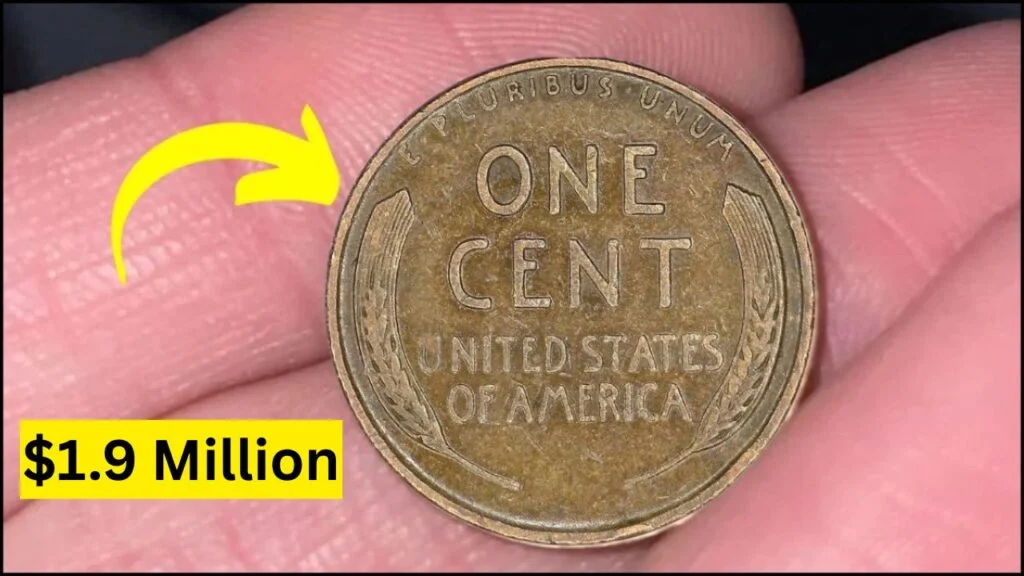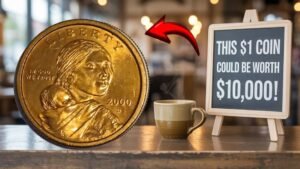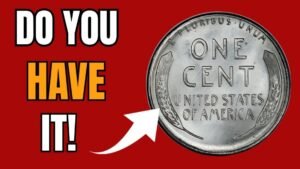Imagine finding a penny worth $21 million in your pocket change. Sounds like a dream, right? The Lincoln Wheat Penny, a humble coin, hides rare treasures that could make you rich. Read on to uncover its secrets, learn how to spot one, and discover why this coin captivates collectors!
What Is the Lincoln Wheat Penny?
The Lincoln Wheat Penny, minted from 1909 to 1958, is a small coin with a big story. Featuring Abraham Lincoln’s profile and wheat stalks on the reverse, it’s a numismatic icon. But some rare versions, due to minting errors or low production, are worth millions. Could one be hiding in your jar of change?
A Glimpse Into Its Fascinating History
Introduced in 1909 to honor Lincoln’s 100th birthday, the Wheat Penny was the first U.S. coin to feature a president. Designed by Victor David Brenner, its wheat stalk design symbolized prosperity. Rare varieties, like the 1943 bronze penny, emerged from wartime minting errors, sparking collector frenzy. These coins tell a story of history and mystery!
Why the Lincoln Wheat Penny Is a Collector’s Goldmine
Today, rare Wheat Pennies fetch jaw-dropping prices. A 1943 bronze penny sold for $1.7 million in 2010, and some estimate top specimens could hit $21 million. Their value lies in rarity, condition, and historical quirks. Collectors chase these coins for profit and passion, making them numismatic legends.
Most Valuable Lincoln Wheat Pennies
| Year | Variety | Estimated Value | Why It’s Rare |
|---|---|---|---|
| 1943 | Bronze | $1M–$21M | Minted in error; most were copper |
| 1955 | Doubled Die | $50K–$100K | Obvious doubling on date and text |
| 1909-S | VDB | $10K–$50K | Low mintage, designer’s initials |
| 1922 | No D | $5K–$20K | Missing mint mark error |
How to Hunt for Your Own Valuable Penny
Ready to search? Start with pocket change, old jars, or inherited collections. Look for key dates like 1943, 1955, or 1909-S. Check for errors like doubled text or missing mint marks. Use a magnifying glass and a coin guide. Visit coin shops or shows to trade or learn more.
Steps to Identify a Rare Wheat Penny
- Check the Date: Focus on 1943, 1955, or 1909-S.
- Inspect the Mint Mark: Look for “S” or missing “D.”
- Examine for Errors: Doubled text or bronze color on 1943 coins.
- Verify Condition: Higher-grade coins fetch more.
Jaw-Dropping Facts About Rare Wheat Pennies
- Only 20–40 1943 bronze pennies exist, accidentally struck during WWII.
- A 1955 Doubled Die penny sold for $124,000 in 2021.
- The 1909-S VDB had a mintage of just 484,000, making it a collector’s dream.
- Some pennies are worth more than gold by weight!
Wheat Penny vs. Modern Penny
| Feature | Lincoln Wheat Penny | Modern Penny |
|---|---|---|
| Years Minted | 1909–1958 | 1959–Present |
| Design | Wheat stalks | Lincoln Memorial/Shield |
| Rare Value | Up to $21M | Rarely over $1 |
| Material | Bronze/Copper | Copper-plated zinc |
Expert Tips for Coin Collectors
- Use a Loupe: A 10x magnifier reveals tiny errors.
- Learn Grading: Coins graded MS-65 or higher are pricier.
- Store Safely: Use acid-free holders to preserve value.
- Join a Club: Numismatic groups share insider knowledge.
- Check Auctions: Sites like Heritage Auctions list rare coins.
Frequently Asked Questions
How do I know if my penny is rare?
Check the date, mint mark, and errors. Use a coin guide or consult a dealer.
Where can I sell a valuable Wheat Penny?
Try reputable auction houses or coin dealers. Online platforms like eBay work, but verify buyers.
Why is the 1943 bronze penny so valuable?
It was a minting error; most 1943 pennies were steel due to wartime copper shortages.
Can I find rare pennies in circulation?
It’s rare but possible! Check change carefully.
Conclusion: Start Your Treasure Hunt Today!
The Lincoln Wheat Penny isn’t just pocket change—it’s a potential fortune. From rare 1943 bronze errors to the iconic 1909-S VDB, these coins hold history and value. Start checking your change, explore coin shows, or dive into numismatics. Your $21 million penny might be waiting! Share this guide and happy hunting!



